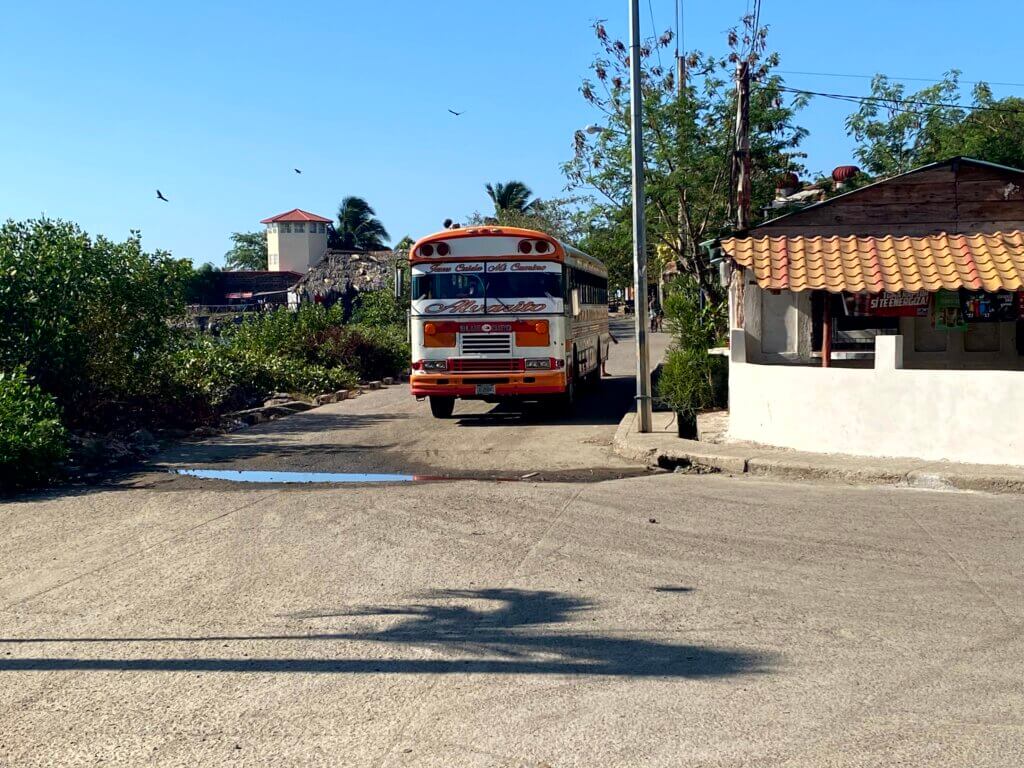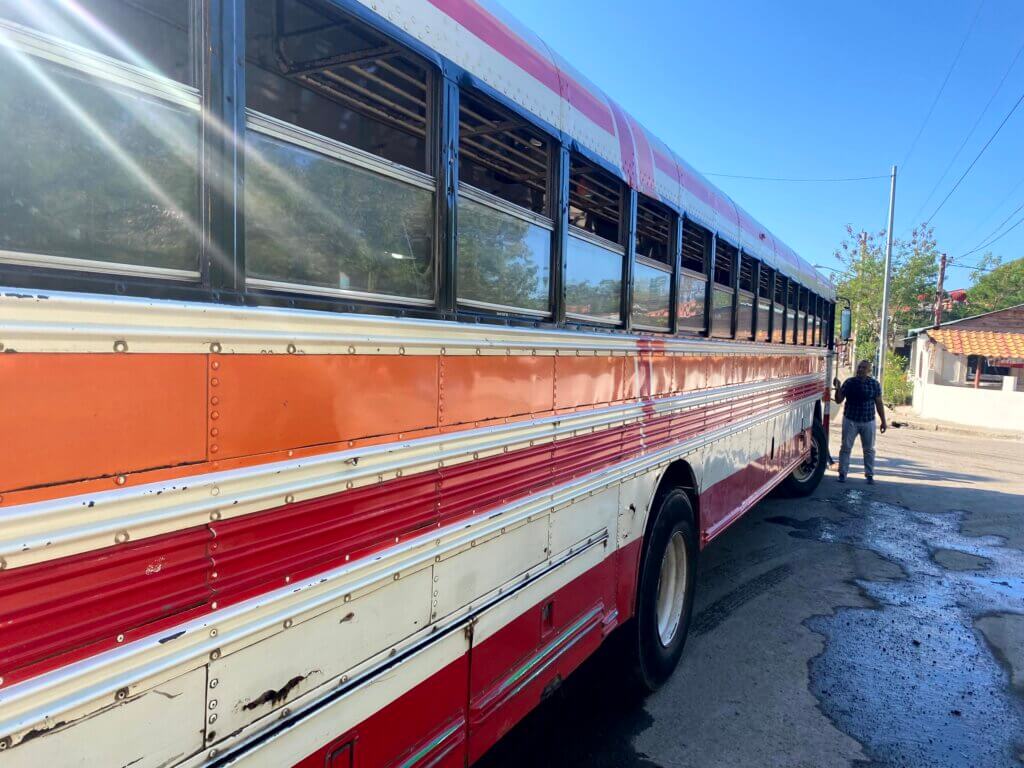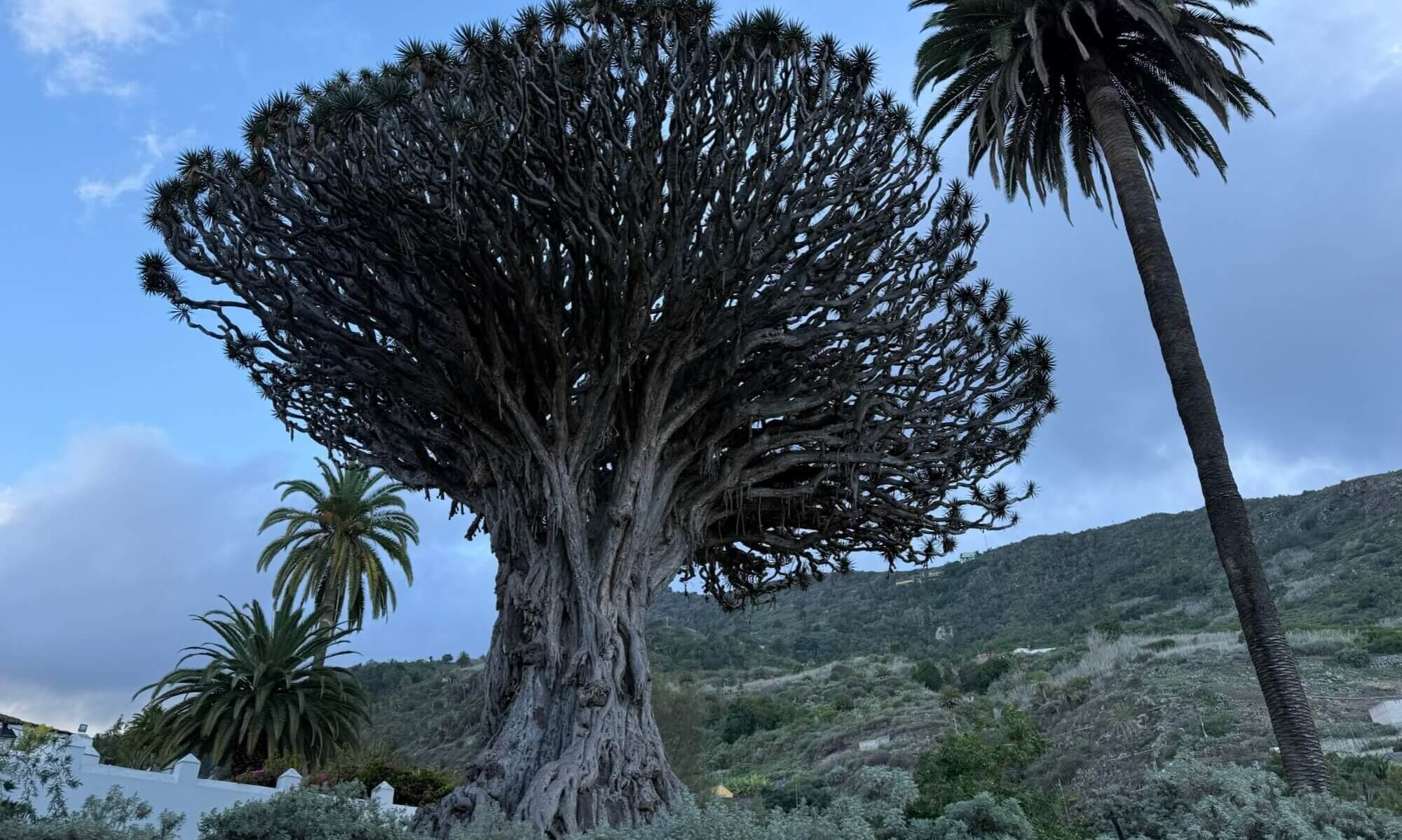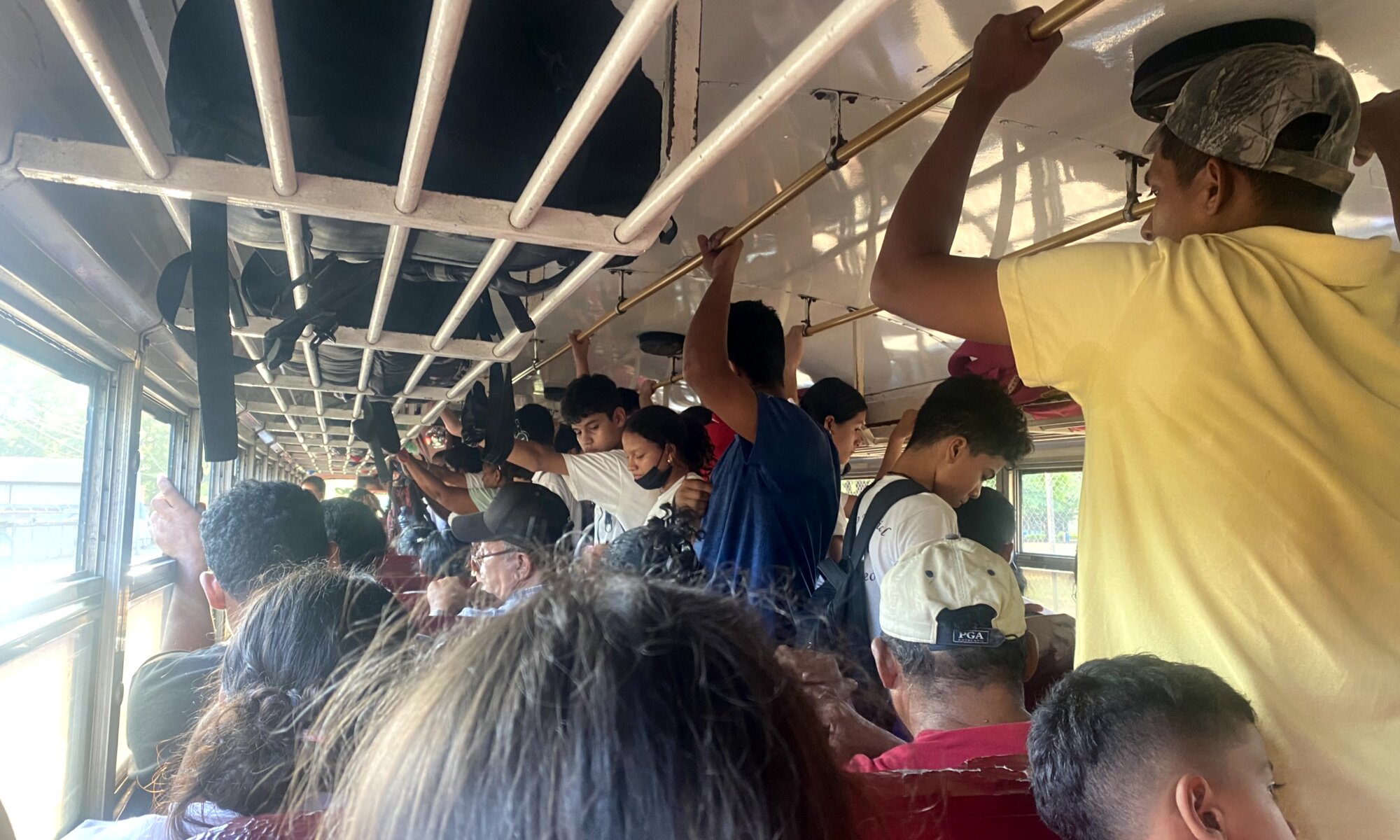What happens to old US school busses? They get sold and receive a second life in Latin America. There they are repainted and receive a religious statement as an inscription in the front. From now on they tour through countries like Nicaragua on fixed routes, but without determined stops and vaguely known schedules. Every now and then people enter to sell food and drinks, beauty products or even livestock – maybe that is the reason for the local name: chicken bus.


If you want to use them, you need to know when and where they’re passing. You’re in the hand of the locals, as there is no network plan or schedule anywhere. Once the bus appears you give the driver a sign and jump in, either in front or in the rear (they’ve got doors on the end of the bus). Somewhen somebody will appear and ask for some Córdobas as the ticket fee, you’ll recognize him when he is standing in front of you even if he doesn’t wear some kind of uniform.
Jesús guía mi camino
If you manage to start your journey at the terminal it is not unusual to be there an hour before the bus leaves: chicken busses typically get very crowded and if you want to have a seat, waiting for departure pretty long becomes part of your plan. By the way: there are typically no central bus stations where all busses leave. You need to figure out at which (sometimes rather hidden) place your bus starts. When the bus gets close to your destination, shout for the driver. He’ll stop and let you exit.
Why should one use this special type of transport? Well, you don’t have much choices. If you don’t want to rent a car (which is pretty costly) you need to take the chicken bus journey. And even if you have a car you don’t want to drive to cities like Managua. But most important: it is fun once you’ve accepted the special situation. It is time to enjoy the landscape, time to interact, time to experience differences. And most often it is like a 1980s disco with music by Phil Collins, Dr. Alban and even Modern Talking. Enjoy the ride!
Chicken bus
Nicaragua
Loading map...


